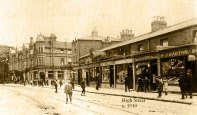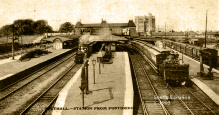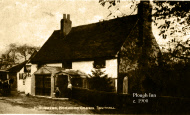Southall 830-
Richard J. Meads




Industrial Growth
In 1932 Angus Watson came and occupied part of the Maypole Works which had been empty
since 1929. They used the institute for office purposes. About the same time a large
piece of land, which had been orchards and playing fields, at the rear was sold to
the Canadian firm Quaker Oats who built a large works. This has been extended several
times and, in 1982, is the area's largest employer. A large fire in 1980 destroyed
some warehouses but these have been rebuilt and Prince Charles visited the works
on April 29th officially to open them. Several other firms moved in using part of
the Maypole's ground -
By 1936 all horse transport had gone and most business people had their own motor transport. Two of the largest motor transport contractors were Moores Furniture Removals and H. Brands who were also Scrap Metal Merchants. Sims and Bowdens, special furniture makers, came to Scotts Road. Two big Builders Merchants, Broads in Park Avenue and Wiggins and Sankeys at Hayes Bridge. Wimpeys had established a large depot in Lancaster Road. There were four laundries, Holly Lodge, Frogmore Green; Corbiere, Oswald Road, Scotch Thistle, Regina Road and the largest Southall Economic, Norwood Road. They have all now closed, the last to go was the Southall Economic in 1973 after 48 years. During the Second World War they had the contract for the laundry of all the United States Forces stationed in the area.
A great many Southall people used to work in Hayes. There were several large factories
there -
Like the rest of the country Southall became aware that another war was a possibility and, at the end of October, 1938, orders were issued for everyone to attend at various centres to be fitted with gas masks. They had been brought from London stores by the St John Ambulance Brigade, just enough for all to be registered for size. Also, in 1938, a start had been made on a new Civic Centre. Having purchased part of the St Joseph's School on the right hand side of South Road, a start was made on a contract worth £83,000, by Dove and Co.; a very extensive cellar complex had almost been completed when the work was stopped by the outbreak of war. These were used by the ARP.
A telephone system was installed and manned 24 hours a day ready to deal with any
emergency. Stocks of various kinds of tinned food and gas masks and first aid equipment
was accumulated. These cellars were all that was built, for, after the war ended,
the plan was scrapped and they were sealed off for several years but, in 1981, plans
have been approved for them to serve as a nuclear bomb fall-
In 1935 it was costing £81,493 a year to run Southall. Besides this £96,466 went
to the Middlesex County Council and to the Police £15,083. The town's loan indebtedness
was £828,759 -